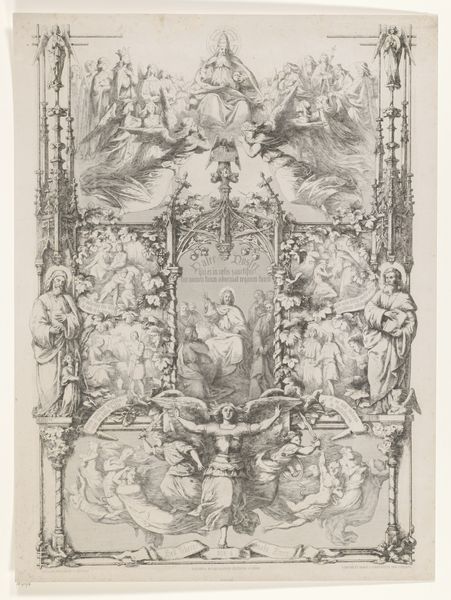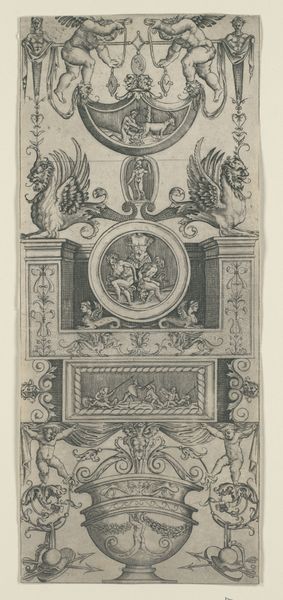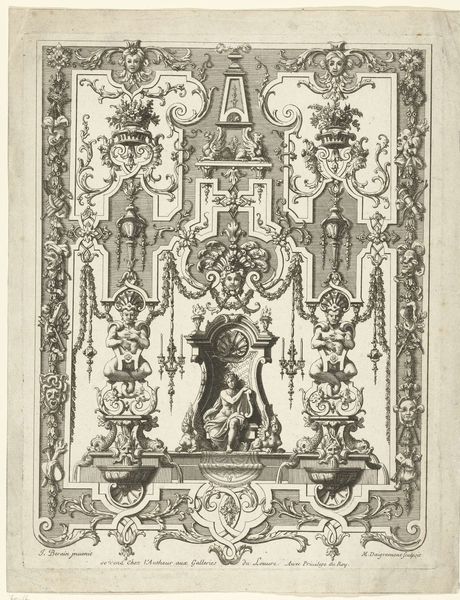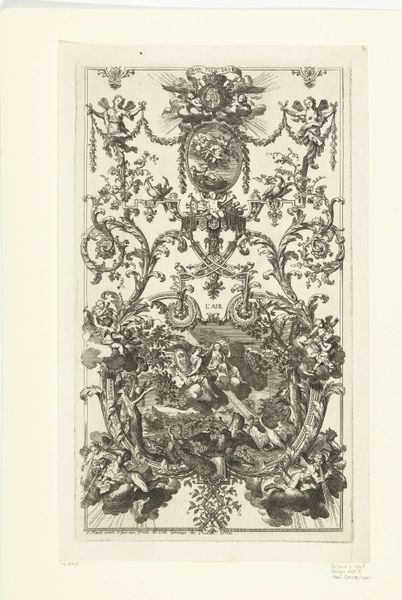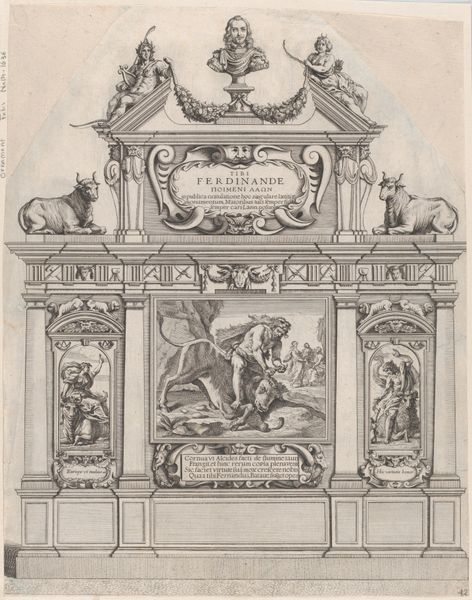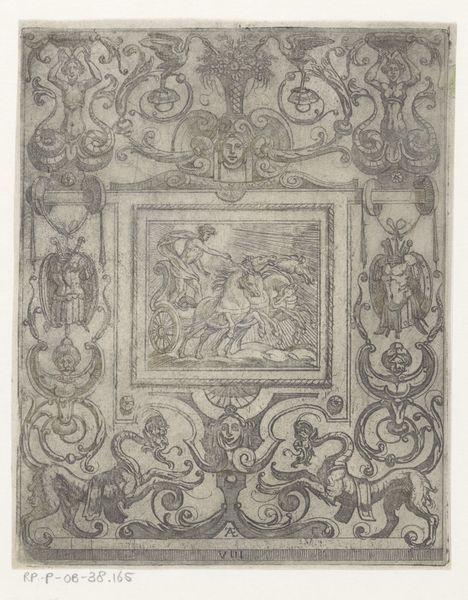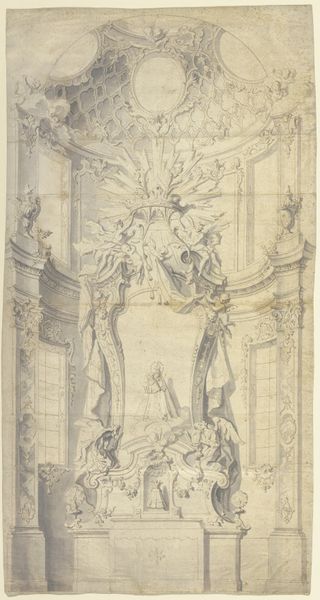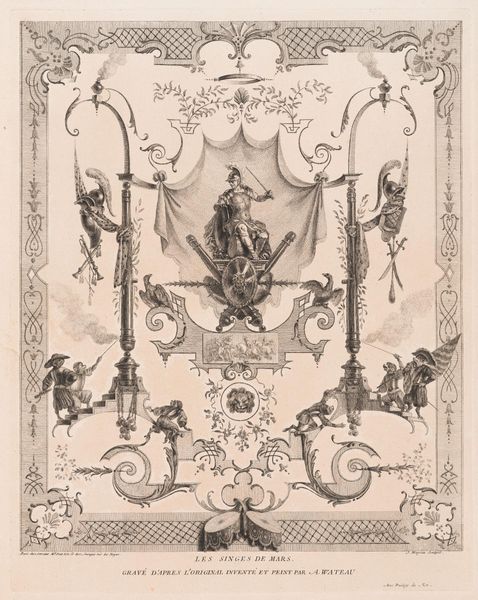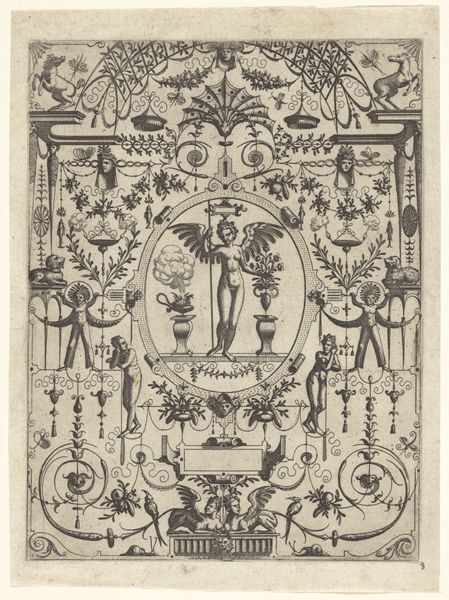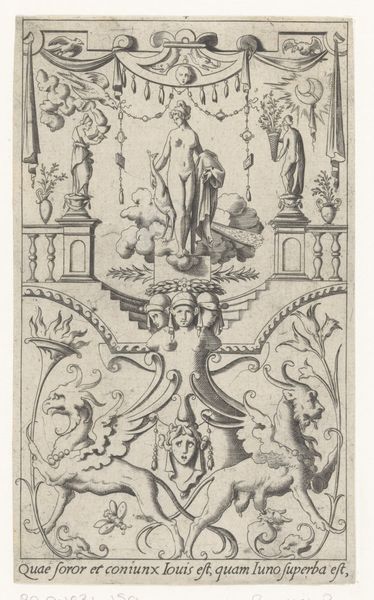
drawing, print, etching, paper, engraving
#
drawing
#
allegory
#
baroque
#
pen drawing
# print
#
pen illustration
#
etching
#
paper
#
history-painting
#
engraving
Dimensions: 300 × 251 mm (image/plate)
Copyright: Public Domain
Claude Gillot made this etching titled "Apollo, from Livre de Portieres," in France, during the late 17th or early 18th century, a time when the French court, under Louis XIV, wielded immense cultural and political power. The image presents Apollo, the Greek god of light, music, and poetry, framed within an elaborate architectural setting reminiscent of a stage design. The Livre de Portieres, or book of doorways, suggests its function as a decorative element, possibly for a grand residence. Notice how Gillot combines classical mythology with contemporary design. The opulence and theatricality of the print reflect the tastes of the French aristocracy and the royal court. The visual codes of classical antiquity and the Italian Renaissance were deployed to legitimize the reign of the "Sun King", Louis XIV. The iconography of Apollo was strategically employed by the Bourbon monarchy to associate itself with the arts, enlightenment, and divine authority. To better understand Gillot's "Apollo," we can turn to period treatises on art and design, accounts of courtly life, and the records of the Académie Royale de Peinture et de Sculpture to fully appreciate the complex interplay of art, power, and society in early modern France.
Comments
No comments
Be the first to comment and join the conversation on the ultimate creative platform.
